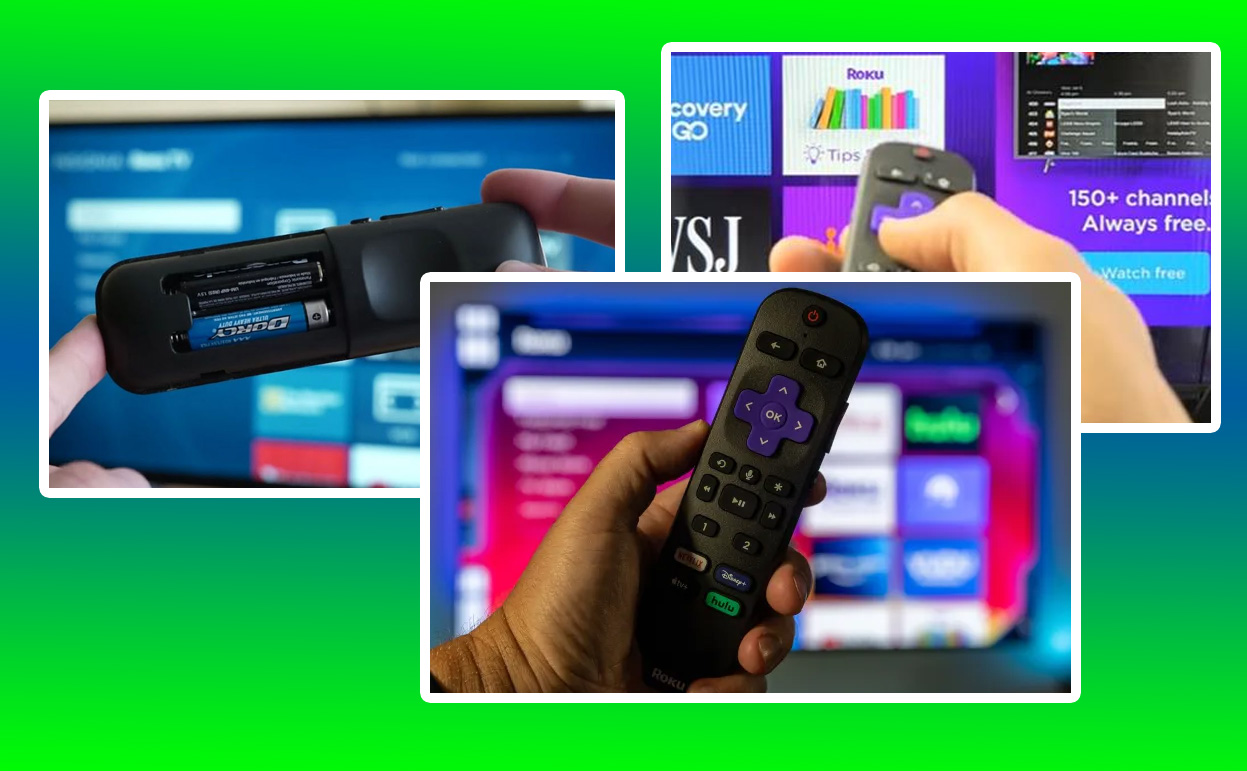Roku devices are cherished for their simplicity, affordability, and reliability. However, even the most user-friendly gadgets can encounter hiccups, and one common issue Roku users face is the dreaded low power alert. This alert typically appears when your Roku device isn’t receiving enough power to function properly. While the issue can be frustrating, it’s rarely insurmountable. With the right guidance, you can identify the cause and implement a solution to restore your streaming experience.

Roku Low Power Fix
The low power alert on Roku devices is a warning that your device isn’t getting sufficient electrical current to operate correctly. Roku streaming sticks and other models are designed to draw power via a USB connection, either through a USB port on your TV or a wall adapter. When the power supply falls short of the device’s requirements, a message often appears on-screen, warning you about the issue.
This alert might also be accompanied by erratic device behavior, such as slow performance, connectivity drops, or frequent reboots. Addressing the low power alert promptly is crucial to ensuring smooth and uninterrupted streaming. Ignoring these alerts can lead to worsening performance over time, eventually resulting in device failure. Thus, understanding and acting on the alert is key to maintaining the longevity and functionality of your Roku device.
Causes of Low Power Alerts
Several factors can lead to low power alerts on Roku devices. The most common culprits include:
Insufficient Power Supply:
The USB port on some TVs doesn’t provide adequate power for Roku devices. TVs vary in their power output capabilities, with some models designed only for low-power USB devices like flash drives. This limitation becomes an issue for devices like Roku that require steady and sufficient power for optimal performance. Older TVs are especially prone to this problem as they may not meet modern USB power standards. Upgrading to a dedicated wall adapter can often resolve this.
Additionally, fluctuations in the power supply from the TV’s USB port can create intermittent issues. Even if the port technically meets the Roku’s requirements, inconsistent power flow can trigger alerts. Switching to a stable power source ensures consistent device operation and prevents such power interruptions.
Faulty Cables or Adapters:
Worn-out or incompatible USB cables and power adapters can fail to deliver the required current. Over time, USB cables degrade due to frequent bending, twisting, and general wear and tear. This deterioration reduces the cable’s capacity to transmit power efficiently. Similarly, low-quality or damaged adapters might not convert electricity to the appropriate voltage and current needed by your Roku device.
Choosing high-quality, durable cables and certified adapters can make a significant difference. Cheap, generic accessories often lack the internal components required for consistent power delivery. Opting for branded or recommended products ensures that your device receives adequate and reliable power.
Loose Connections:
Poor connections between the USB cable, adapter, or Roku device can lead to inconsistent power delivery. A loose connection might seem minor, but it can severely affect your device’s functionality. For instance, a partially inserted USB cable might result in intermittent power supply, causing your Roku to reboot frequently or display low power alerts.
Ensuring that all connections are secure and free from obstructions is critical. Inspect the USB ports for debris or damage, as these can also hinder proper connectivity. Regularly checking and maintaining the integrity of these connections prevents avoidable disruptions.
External Interference:
The use of long or substandard extension cords or power strips may result in reduced power flow. Extension cords and power strips often introduce additional resistance in the electrical circuit, which can diminish the power reaching your device. Moreover, older or lower-quality power strips might not handle modern electrical demands effectively, exacerbating the issue.
Switching to direct connections or using high-quality extension cords and power strips can mitigate this problem. Devices like power conditioners or surge protectors designed for sensitive electronics can further enhance power stability, ensuring your Roku operates without hitches.
Each of these factors plays a significant role in determining the overall performance of your device. For instance, older TVs often have outdated USB standards that don’t meet modern power requirements. Meanwhile, poorly manufactured cables can deteriorate faster, leading to frequent power interruptions. Understanding the specific cause of the alert is the first step toward resolving it. Each issue requires a tailored approach to ensure your Roku device functions as intended.
Troubleshooting and Fixing Low Power Alerts
To fix low power alerts on your Roku device, it’s essential to adopt a systematic approach. Begin by identifying the root cause of the problem and proceed with the appropriate solution. Often, users might rush to replace their device when the actual problem lies in a simple component like the USB cable or adapter. Taking the time to diagnose the issue properly can save you money and effort.
Inspect the Power Source
The easiest way to address low power alerts is to check the source of power for your Roku device. If your Roku is connected to your TV’s USB port, ensure that the port provides sufficient power output. Some older or low-power TVs may not deliver the 5V and 1A current typically required by Roku devices. Switching to a dedicated wall adapter can often solve the issue. Wall adapters are designed to deliver consistent power, which ensures your Roku device operates without interruptions.
For newer TV models, it’s worth consulting the user manual or manufacturer specifications to confirm the USB port’s power output. Even among newer TVs, the USB power capacity can vary significantly, with some offering as little as 500mA, which falls short of the Roku device’s requirements. Identifying this mismatch early can save you from unnecessary troubleshooting steps.
Verify If the USB Cable and Adapter are Compatible
Using the original USB cable and power adapter that came with your Roku device is highly recommended. Over time, generic or low-quality cables and adapters can degrade, leading to insufficient power delivery. If your original components are unavailable, ensure that replacements meet the device’s power specifications. Investing in a high-quality, third-party adapter can also be a viable solution.
Cables with high resistance or poor internal wiring can cause significant power loss during transmission. Opting for cables labeled as “fast charging” or “high-speed data transfer” often ensures they are of superior quality. Additionally, some adapters and cables are specifically marketed for streaming devices, making them an excellent choice for long-term reliability.
Check the Cable Connections
Loose or partially connected cables can create power delivery issues. Examine each connection point, from the USB cable’s attachment to the Roku device to its plug into the power source. Firmly secure all connections and ensure there is no visible damage to the ports or cables. Dust and debris accumulation around the USB ports can also impact connectivity. Cleaning these ports gently with a dry, soft-bristled brush can enhance the connection quality.
Try Other Alternative Power Options
If your current setup isn’t resolving the low power alert, consider an alternative power option. For instance, use a power bank or a different USB power adapter with a higher output rating. These alternatives can often bypass the limitations of underpowered TV USB ports or faulty outlets. Power banks, especially those with “pass-through charging” capabilities, can act as a stable power source during extended usage periods.
Additionally, some users have reported success using powered USB hubs. These hubs not only expand the number of USB connections available but also provide dedicated power delivery for connected devices. This option is particularly useful if you have multiple devices vying for limited USB power resources.
Preventing Future Power Issues
Once the low power alert is resolved, adopting preventative measures can save you from similar issues in the future. Regularly inspect your USB cables and adapters for wear and tear. Keep your Roku device’s firmware up to date to ensure compatibility with its power requirements. Moreover, avoid using overly long USB cables or extensions, as these can reduce the efficiency of power delivery.
Preventative maintenance also includes ensuring your Roku device is kept in a cool, well-ventilated environment. Overheating can exacerbate power issues, as high temperatures often increase electrical resistance in cables and connections. By maintaining optimal operating conditions, you reduce the likelihood of recurring power alerts.
Troubleshooting Reference Table
| Issue | Potential Cause | Solution |
|---|---|---|
| Low Power Alert | Insufficient USB power | Use a dedicated wall adapter |
| Device Reboots Frequently | Faulty USB cable | Replace with high-quality cable |
| Intermittent Alerts | Loose connections | Secure all connections firmly |
| No Alert, But Slow Device | Power interference | Avoid long or substandard cables |
Final Thoughts
The low power alert on Roku devices might seem like a significant issue at first, but with the right approach, it’s a manageable problem. By understanding the causes and applying the appropriate fixes, you can ensure your Roku device operates seamlessly. Whether it’s a simple cable replacement or a switch to a wall adapter, addressing the issue promptly will restore your streaming experience to its full potential.
Roku’s commitment to simplicity and functionality remains steadfast, and resolving power-related issues is part of ensuring a reliable entertainment platform. As you troubleshoot and implement these solutions, your Roku device will continue to serve as a dependable companion for all your streaming needs. Taking proactive steps not only resolves the current issue but also safeguards against potential disruptions, allowing you to enjoy uninterrupted entertainment for years to come.
Also Check:
- A Quick Fix: Roku Guest Mode Not Working
- Roku Green Light Blinking: What Does it Means and How to Fix It
- Why is My Roku Remote Blinking and Not Working: How to Fix It
- Best Roku Alternatives for 2025 (Tested and Review): Streaming Performance, Device Integration, Content Selection,…
- This Roku Remote Is Rechargeable, Saving You from Constant Battery Swaps
- This Roku Remote Has Motion Controls for Gaming
